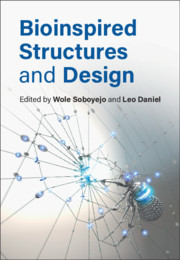Book contents
- Bioinspired Structures and Design
- Bioinspired Structures and Design
- Copyright page
- Contents
- Contributors
- Preface
- Part I Materials
- Part II Structures
- 5 Bioinspired Underwater Propulsors
- 6 Bioinspired Design of Dental Functionally Graded Multilayer Structures
- 7 Bionic Organs
- 8 Bioinspired Design for Energy Storage Devices
- 9 Bioinspired Design of Nanostructures
- Part III Natural Phenomena
- Index
- References
8 - Bioinspired Design for Energy Storage Devices
from Part II - Structures
Published online by Cambridge University Press: 28 August 2020
- Bioinspired Structures and Design
- Bioinspired Structures and Design
- Copyright page
- Contents
- Contributors
- Preface
- Part I Materials
- Part II Structures
- 5 Bioinspired Underwater Propulsors
- 6 Bioinspired Design of Dental Functionally Graded Multilayer Structures
- 7 Bionic Organs
- 8 Bioinspired Design for Energy Storage Devices
- 9 Bioinspired Design of Nanostructures
- Part III Natural Phenomena
- Index
- References
Summary
Global warming is a pressing issue for both current and future generations. The various impacts of improper environmental handling have led to drought, famine, flooding, and other natural disasters. In addition, current global energy consumption is growing exponentially, and dependence on foreign oil and gas not only negatively affects the environment but also creates national dependencies that endanger social stability [1]. An alternative, environmentally friendly energy source is therefore required to preserve nature and fulfill this ever-growing need for energy. However, clean energy sources, such as solar radiation, wind, and waves, are intermittent and require energy storage platforms [2]. To this end, high energy density rechargeable batteries have recently attracted tremendous research attention as they enable efficient storage of intermittent clean energy and electrification of transportation vehicles. Similar to fossil fuels, batteries store energy as portable chemical energy, which is the most convenient form of storage.
- Type
- Chapter
- Information
- Bioinspired Structures and Design , pp. 193 - 211Publisher: Cambridge University PressPrint publication year: 2020



